london House
London house
The Borough
London House was built on the site of the Church House, on the corner of Middle Street and Silver Street facing the Borough. The Church House was Peter Daniell's draper's shop and warehouse in 1815 and was the most valuable of the Church properties in town with an annual value of eighty pounds. Church House was "for many years" the premises of drapers Edwards & Deane, who vacated the property in 1830 when their new premises at 25 High Street opened.. The Church House was sold by 1836 for £699, demolished and at its location was built London House.
London House, for most of its existence of just 78 years, continued as a draper's shop although it had a brief spell as the shop of pastrycook Giles Rendle and his family as listed in the 1841 census. By the 1851 census London House was occupied by 54-year old silk mercer and draper George Wadman, his wife Mary and their two children. Additionally there lived five draper’s assistants, a draper’s apprentice and two domestic servants. The shop was run by George assisted by his brother Robert and they claimed that their business had been founded in 1645. St John's Churchwardens' Accounts refer to Wadman as a draper in 1844 and in 1847 refer to G Wadman & Co. Slater's Directory of 1852 listed Wadman & Co as Tailor & Linen Draper of Middle Street.
George Wadman presumably moved premises further along Middle Street because, although the 1866 Post Office Directory listed him as a linen draper of Middle Street, by the time of the 1861 census London House was occupied by 31-year-old John Wiltshire who listed his occupation as 'Draper employing 4 hands'. Also living on the premises was 19-year-old draper's assistant George Conar and 17-year-old draper's apprentice William Colley. The 1871 and 1881 census returns both marked the property as uninhabited.
In the 1891 census London house was occupied by 32-year-old draper Thomas Thorne with his wife Julia and three young sons all aged under 4. Also resident were four drapers' assistants, a cook, a nurse and a housemaid. Similarly, in the 1901 census 42-year-old draper Thomas Thorne was still in residence with his wife Julia and son Reginald. Additionally, living on the premises, were nine young ladies aged between 17 and 29, including five drapers assistants, two milliners, a cook and a housemaid.
London House was demolished in 1913 and the present building built for the Midland Bank opened in 1914. It is now occupied by the HSBC.
MAP
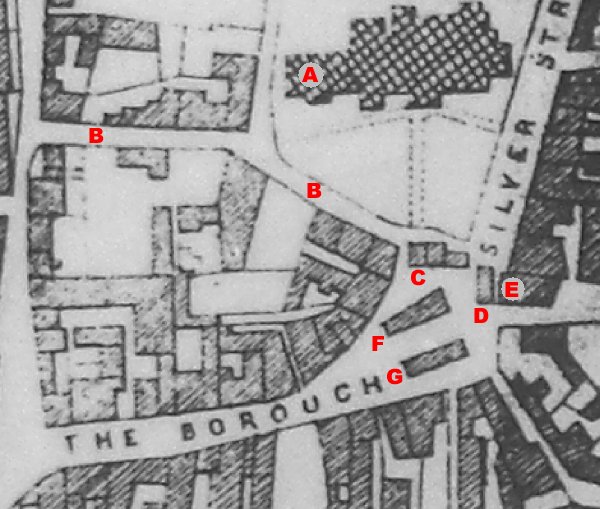
Day's map of
1831 showing the
Borough, plus a
few associated
features;
A = The
Chantry in
original
position,
B =
Church Lane
/ Street, C =
Tolle Hall,
D = Bow,
E = London
House, F = The
Butchers'
Shambles, G
=
Market House.
gallery
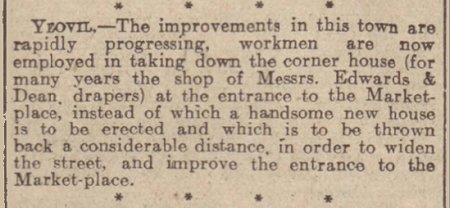
The Church House was demolished in May 1836 and construction of London House began immediately after the site was cleared.

From my
collection. This
colourised photograph
features in my
book "Lost Yeovil"
This photograph of the Borough dates to about 1865. At centre is Middle Street with the Medical Hall to the right and London House, at this time occupied by draper John Wiltshire, to the left.

This
colourised photograph
features in my
book 'Yeovil From Old Photographs'.
This photograph was taken by Yeovil Photographer Jarratt Beckett and published in his 1897 book "Somerset viewed through a Camera". At left is London House, at this time being run by George Wadman. At right is the side of the Medical Hall which, at this time was occupied by wholesale and retail chemists Gatward & Wright. Next door to the Medical Hall was the International Stores.

This colourised photograph
features in my
book 'Yeovil
From Old
Photographs'.
This postcard was produced around 1900 from the Borough, looking towards the junction of Silver Street at left and Middle Street at right. The large building on the corner was London House which was built in the 1830s and occupied mostly by a succession of drapers (at this time by Thorne). Going down Silver Street was Singleton's boot stores, a greengrocer and then the Half Moon Hotel.
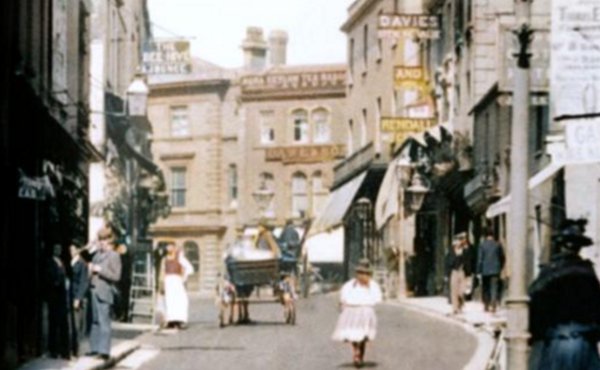
.... and seen from Middle Street also around 1900. This colourised photograph looks towards the Borough, London House stands on the corner to the right of the horse and cart.
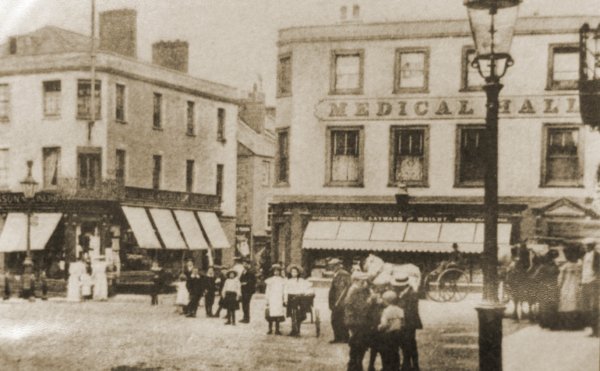
London House, at left, and the Medical Hall photographed around 1900.
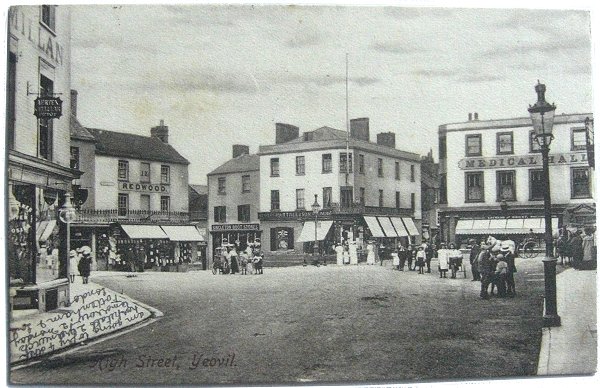
From my
collection.
This photograph
features in my
book 'Yeovil
From Old
Photographs'.
A postcard of the Borough dated 1906 showing London House at centre, on the corner of Silver Street and Middle Street. At this time it was occupied by linen drapers, Hartree & Son.
Also of interest is the fact that the sender has written his message in very tiny writing on the front of the postcard because at this time only the address was allowed on the non-picture side of the postcard.
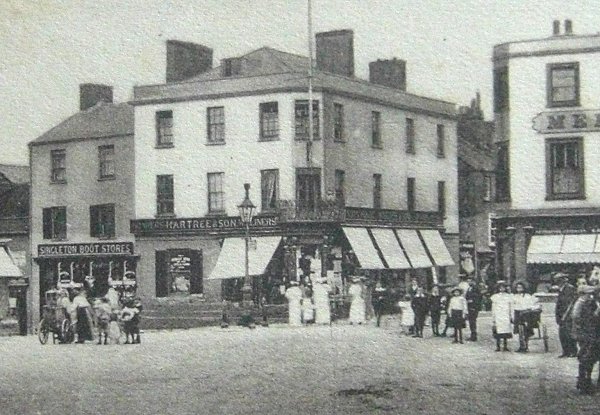
From my
collection
An enlargement of the previous 1906 photograph to show London House more clearly.

This photograph of Silver Street, taken from the Borough, was by J Slade and published as a postcard in 1913. At the extreme right side, with the awning is London House which was demolished in 1913 and the present building built for the Midland Bank opened in 1914. The photograph features a single-light Sugg lamp at the centre.
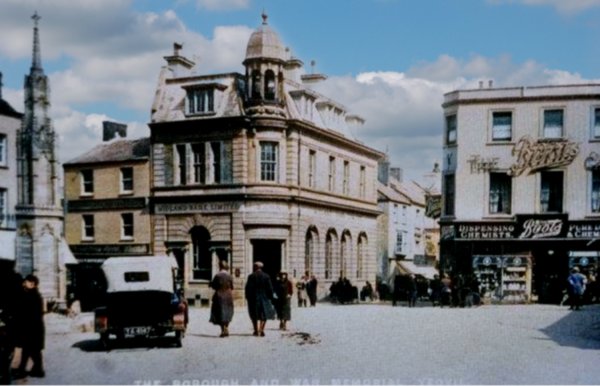
This colourised postcard of the Borough dates to 1925 and shows the Midland Bank building that opened in 1914, replacing London House.